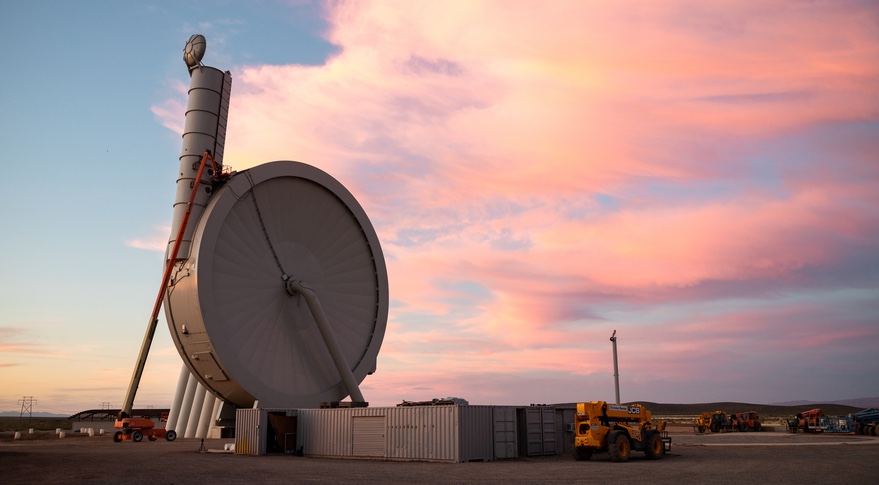PARIS — SpinLaunch, a company developing a launch system that uses a centrifuge as a first stage, raised $71 million to continue work on that system and a line of satellites.
SpinLaunch, based in Long Beach, California, announced Sept. 20 it raised the funding in a Series B round led by ATW Partners, with the participation of several other funds and individuals. The round is a mix of debt and equity, but the company did not disclose the split between the two.
The company has raised $150 million to date to fund work on a unique launch system that uses a centrifuge to accelerate vehicles to hypersonic speeds. The vehicles will then use rocket engines, like on conventional upper stages, to place payloads into orbit. SpinLaunch argues that approach can enable a much higher flight rate than conventional rockets while also being more environmentally friendly.
“We share in the company’s goal to realize the full-potential of the space economy by developing a revolutionary space launch system that is both very low cost and environmentally sustainable,” said Wen Hsieh, general partner at Kleiner Perkins, a venture capital firm that participated in the funding round, in a statement.
SpinLaunch built a smaller version of its centrifuge at Spaceport America in New Mexico, 33 meters in diameter, for suborbital tests. The system launched its first vehicle in October 2021 and has conducted nine tests to date, although it has disclosed few details about the speed and peak altitude of those tests.
“SpinLaunch’s mission is to bring the world low-cost, sustainable access to space. We’ve taken a big step in that direction with the completion of our 33-meter Suborbital Mass Accelerator,” said Jonathan Yaney, chief executive of SpinLaunch, “retiring the technical risk as we prepare the way for the construction of our full-size Orbital Launch system.”
The company projects beginning orbital launches with a much larger accelerator, 100 meters across, as soon as 2026, but has not announced where that accelerator will be based. It will not be at Spaceport America because of overflight issues, said Randy Villahermosa, vice president of product and space systems at SpinLaunch, during an Sept. 14 presentation at the Small Payload Ride Share Association annual symposium.
While the orbital centrifuge will not be ready until 2026, Villahermosa mentioned in his talk the company was planning “an intermediate service around 2024 that will use some of our satellite and launch tech.” He didn’t elaborate on the service but said that the company will release additional details in the coming months.
SpinLaunch, in addition to the launch system, is working on satellites optimized for it. They include a 12U cubesat bus and a 200-kilogram satellite, the latter equal to the payload capacity of the orbital system. A 12U cubesat prototype will launch as soon as January, he said, but disclose the launch provider.
The company is developing the satellites in part to meet anticipated demand for launch services that could exceed what current satellite manufacturers could meet. The orbital system is designed for up to 10 launches a day and 2,000 per year. “We anticipate there won’t be enough industrial base to support our launch system, yet there’s plenty of demand,” he said.
The satellites are also designed specifically for the orbital system, where the centrifuge accelerates payloads at 10,000 g. SpinLaunch has also tested satellite components and found many could handle the launch environment despite those accelerations, in part because the acceleration takes place in a vacuum and thus there are no random vibrations from acoustics.
“We get asked a lot about the g’s,” he said. “It’s a very gentle 10,000 g’s.”
